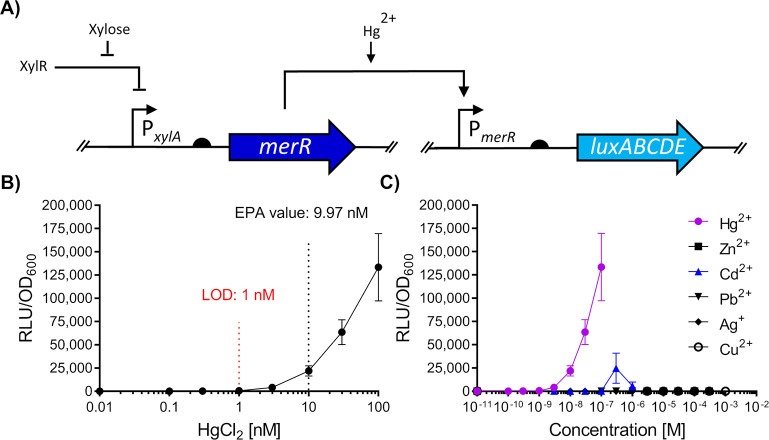Figure 1.
Design and evaluation of a heterologous Hg2+-sensing synthetic circuit in B. subtilis. (A) Schematic representation of the MerR synthetic sensing module in B. subtilis W168 derived from S. aureus TW20. In the circuit, induction with Hg2+ allows MerR to activate luciferase expression as a function of Hg2+ concentration. Bent arrows indicate promoters, flat-head arrows indicate inhibition, black semicircles indicate ribosome binding sites and genes for both merR and luxABCDE coding sequences are indicated by dark and light blue arrows, respectively. (B) Dose response of the Hg2+ circuit. The Environmental Protection Agency (EPA) guideline value is indicated, and the estimated limit of detection (LOD) for the regulatory circuit is shown (red). (C) Metal specificity of the circuit. For panels (B–C), cells were grown to OD600 = ∼0.03 and induced with the concentrations of metals as indicated with luciferase activity output (relative luminescence units [RLU]) normalized to optical density (OD600) values (RLU/OD600) for three time points (35, 40, and 45 min) postinduction. Values are presented as mean and ± standard deviation of either two or three independent replicates.

